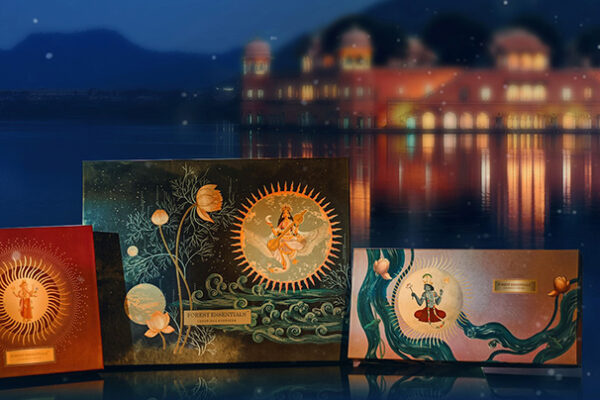Love, they say, makes the world go round. There are so many questions when it comes to love. How do we know we are in love? Is it possible to fall in love at first sight? We also, often, think of love only in terms of romance. But love can be anything as simple as a touch that gives butterflies or a hug from your child, parent or a special someone. This Valentine’s Day, discover these gestures that speak louder than the eight letters, three words with Forest Essentials.

The Greek’s Study of Love
The Greek say that there are as many forms of love as there are lovers. The philosophers in ancient Greece studied love as a universal emotion and divided the term into different categories. They called ‘Eros’ as love that is associated with romantic, passionate love, named after the Greek God of love himself, while the word ‘Philia’ was used to define a type of affectionate love – the love of goodwill and friendship. They also counted the love of loyalty and trust as the highest form of love. The ‘Storge’ love is a form of natural affection – a type of familial love that is for unconditional acceptance and sacrifice, like the love for one’s child that is selfless and altruistic or a type of “spiritual” love that is expressed through meditation and intuition.

Traditional Indian Gestures of Love
While there were many types and stages of love, it was not easy to declare, or even express your love as per the societal norms in traditional cultures all over the world. A time before paper and pencil, where public acts of love were impermissible, people often used gestures, symbols and body language to display their love for their lovers. The only places you were likely to run into your lover were public gatherings and festivals, where all you could use were certain signs and signals to have a conversation and express your feelings without the usage of words. Imagine a setting where you meet your lover surrounded by a number of people and you make eye contact across the room. The next few gestures would include you touching your ear – which ideally suggested “How are you?”. In response, your lover would put their hands on their heart, which suggests “I miss you”. Many such gestures of love and body language are sometimes still used as little nuances in Hindi cinema, to display the traditional culture of expressions and unsaid gestures of love.
Flowers as A Form of Expressing Love
A very prominent gesture of love that still holds ground in the society, even after centuries, is the art of gifting flowers. Flower gifting has been popular since centuries and are used to communicate our emotions towards the ones we love. Today, giving flowers is considered to be an act of love, but not many know that for Victorians, flowers were the language used by secret lovers to express emotions and spread messages that could not be spoken out loud in the society. Since proclaiming love in public was unacceptable, they assigned several meanings and symbols to each flower to play the covert game of courtship. There were a myriad of floral dictionaries in the market with most homes owning at least one guide. In India too, the rose flower remains a symbol of love. Traditionally, it was also used by women as a hair accessory, when they loved someone or prayed for love to spread in their family. While the chosen flower was of utmost importance, the method of delivery, too, had to be well thought of. The bouquet delivered upright denoted a positive message, delivered up-side down meant the message was negative. Similarly, handed to someone with a right hand meant “Yes” whereas left hand meant “No”.

Love in Bollywood
On screen, the couple’s eyes met across the room and roses or any other bright coloured flowers were used on screen to signify intimate scenes during the ‘60s, since kissing and other gestures would be censored. Running around trees whilst signing songs would suggest flirting and teasing with lyrics that were almost conversational between the man and woman. The first Indian kiss on screen, appeared in a silent film called ‘A Throw of Dice’, based on a chapter from Mahabharata, directed by German film-maker, Franz Osten. This film had a short courtship scene involving actress Seeta Devi as the village girl and Charu Roy as the king. After the debut of the gesture of kissing in 1929, India soon adopted an advisory board that prohibited the display of kissing. Elements including water and fire were used to suggest carnal desires. It was Raj Kapoor who suggested creative ways of displaying intimacy on screen with tricks and hacks. Later in the ‘90s and 2000’s was the coming of age for Hindi cinema with bolder scenes that didn’t shy away from displaying their desires.
Source: Brut India
The Love for Self
Up until this point, each stage and type of love has always been directed outwards into the world, but love only becomes a full circle when it reaches back to oneself. When asked to mention someone you love, most people, almost never, would think of mentioning themselves. However, in order to truly love someone, you must first learn how to love yourself. Loving yourself means allowing yourself to be happy, along with accepting all your faults and loving them too!
This Valentine’s Day, while you’re busy loving everybody else, don’t forget to spread some love within!















